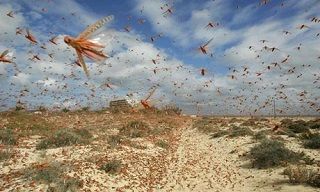From Guest Blogger Christine Rudolph: Climate Change Can Bring Unwelcome Pests

If we talk about pests and insects, climate has a direct influence on their population. There are many regions where pests have grown in numbers due to changing temperatures and humidity levels.
Global Warming and Pests
In areas located at high or mid-latitudes, the changing temperature has eventually resulted in quick and rapid reproduction and survival rates among insects. This explains the reason of obvious and definite changes in a number of insect species, increasing or decreasing in the past years. As the climate gets warmer and warmer in some regions, it also increases the number of pests and changes in their life cycles. Many insects or house hold pests which would earlier wait to reproduce in certain warmer seasons are now finding the ideal climate and conditions to reproduce in other season too. Because of their high reproductive rate, short life span, their ability to move from one place to another in small intervals of time, and warmer temperatures have given them a more suitable environment to live and grow just about anywhere. In short, global warming and climate changes have mainly amplified their population and development. Given the current circumstances, people in farming industry and other industries, which are directly affected by pests and insects now, require efficient pest management solutions more than ever.
High humidity & Extreme weather conditions
Due to the change in climate and temperatures, humidity in certain tropical regions has also increased. Regions with high humidity levels and close proximity to the ocean or sea are likely to get an uninvited number of pests. Humidity, warmer temperatures and dark areas serve as the ideal habitat for many pests. Rise in sea level and extreme weather conditions leads to soil erosion which in return has affected the soil’s ability to hold back pests living under soil. This imposes a serious threat for crops during growth seasons, storms or hurricanes are not only responsible to destroy crops but where the effect of a storm is minimal, crops are destroyed by such insects and pests coming out of the soil.
Migration of Alien Pest Species
Regions which were earlier considered unsuitable for pests to develop and reproduce because of colder temperatures are likely to get a growing number of migrating pests. As the temperature rises in colder regions many species of alien pest and insect are now moving to these parts. A number of unknown pest populations will now extend their geographical range because warmer temperatures have also improved their flight and feeding behavior.
The overall change in earth’s climate has naturally left its impact on all eco systems. Pests and insects being a part of it have also experienced changes in their population, development and mortality rates.
All these changes and the growth of unwelcomed pests have exposed animals, humans, and crops to many diseases to which they hold no natural immunity.
